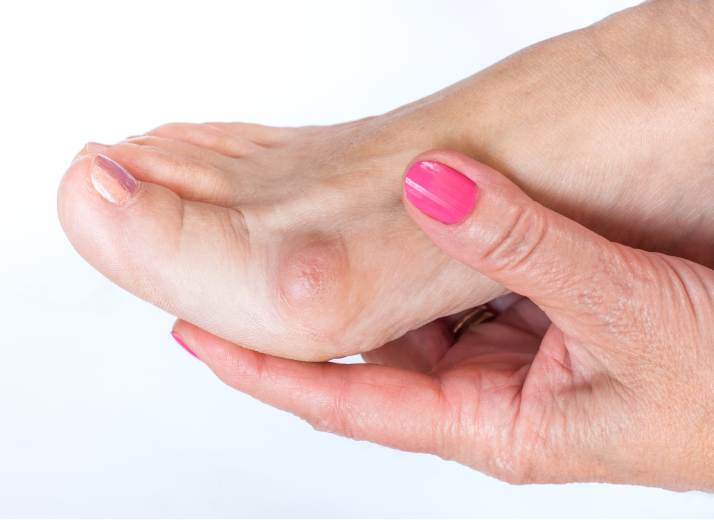
Pain
Bunions tend to lead to pain and soreness at the big toe joint, the 1st MTPJ. Though persistent pain is one of the most common signs that a bunion requires treatment, pain itself isn’t always the best guide on what is happening with your bunion. In fact, a bunion can be 90% advanced before a person even feels any pain or discomfort at all. But as the condition progresses, the pain is often indicative of a more advanced issue. If a bunion is especially sore it may mean there is degenerative change or osteoarthritis.

Inflammation
Soft tissue swelling is common in and around the 1st MTPJ as the joint begins to protrude outward. The skin becomes inflamed and red, and the inflammation may persist for prolonged periods of time if the bunion goes untreated.

Bony Lump
When the big toe joint becomes misaligned, a noticeable bony lump will often form on the outside of the toe. The bony lump causes a more noticeably defined bump on the outside of the toe joint, and this is typically a sign of a more advanced condition.

Decreased Mobility
As the joint becomes mispositioned, you might also experience a loss of mobility in the affected toe. The loss of mobility could also be the result of persistent pain or pressure from swelling. It may also indicate degenerative change or even osteoarthritis through the joint.

New Patient Bunion Assessment
Only $35* Usually $100
*Claimable on your private health insurance
